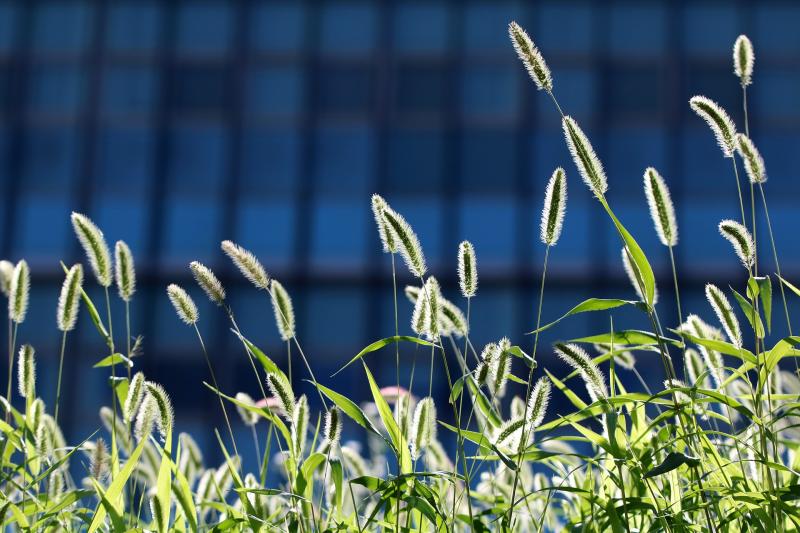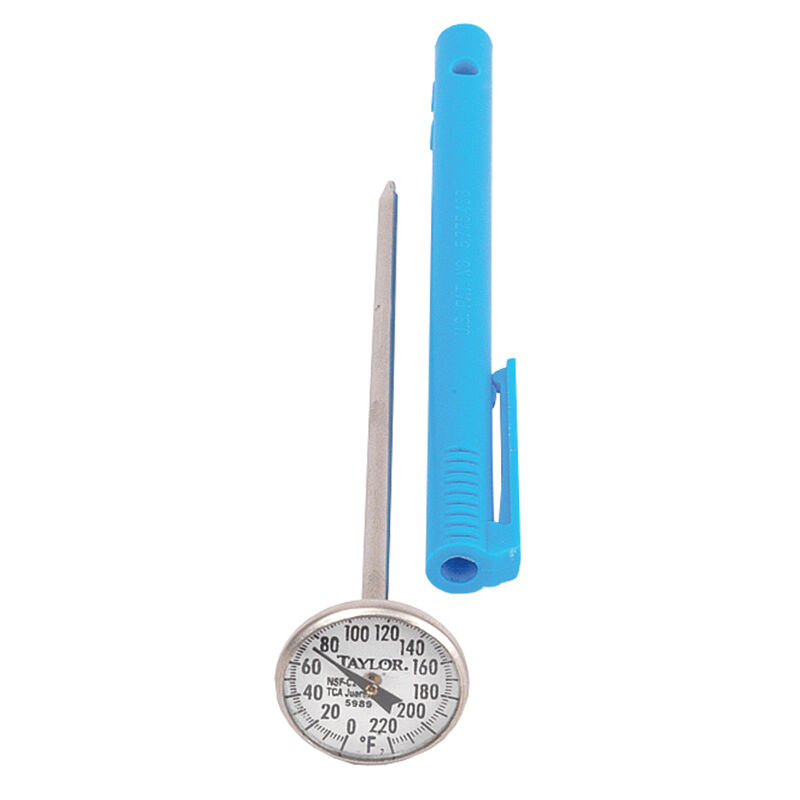
Warm temperatures in March have had many homeowners wondering about this year's first spring preemergence (PRE) herbicide application. When is the right time to apply in spring? If you've waited, that's good.
PRE Herbicide Residual
PRE herbicides act by killing germinating weed seedlings; they come in contact with the herbicide as they grow their first shoot or root. The herbicide is gradually broken down by light and soil microbes, and this process starts as soon as the product is applied regardless of whether weed seedlings are present or not. Applying your PRE herbicide too early reduces the length of its actual effectiveness during periods of active weed growth, providing less weed control for your dollar.
The guideline for PRE applications is based on the required soil temperature for germination of crabgrass and foxtail; 55° F at 4-inch soil depth for several days.
 Soil Temperatures Still Cool
Soil Temperatures Still Cool
Despite some warm periods in March, eastern Nebraska continues to experience nights with freezing temperatures. In the last week, soil temperatures for eastern Nebraska ranged from 44° F to 49° F, well below the 55° F temperatures needed for crabgrass germination. To monitor soil temperatures for your location, visit go.unl.edu/soiltemp. This data is updated daily by the Nebraska State Climate Office. Or, to be even more precise, purchase a soil thermometer and measure the soil temperatures in your own lawn.
In each of the last three years, Lincoln's last freeze with temperatures below 32° F has occurred between April 22th (2021) and May 3th (2023), according to data from the High Plains Regional Climate Center. The 130-year average last freeze for Lincoln is April 23rd.
If crabgrass did begin to germinate before now, plants will likely be killed by normal spring freezes between now and late April. So let Mother Nature take care of the early germinating weeds and wait to make your first PRE application. But there are a couple more options for early germinating crabgrass control, so read on.
Image above right - Purchase a soil thermometer and measure the exact soil temperatures in your own lawn. Image from Johnny's Selected Seeds, johnnyseeds.com.
When to Apply
For DIYers, who can make their application at the optimal time, wait and make your first PRE application between April 15th and the first week of May. Each product has a specific residual length. Follow label directions for the product you buy and make a second PRE application as directed in midsummer, or about mid-June, for season-long weed control. Many DIYers skip the second PRE application and are frustrated by the amount of weeds appearing in late summer. Once the PRE herbicide barrier is gone, dormant weed seeds germinate quickly in the warm soils of July and August.
And remember, pre-emergence products are often impossible to find by mid-summer, so buy all the products you need for this season's weed control in spring and store them in your garage until you need them.
Several PRE herbicides are available to homeowners. To figure out which one you are buying, look for the chemical name in the active ingredient statement on the front of the fertilizer bag.
- trifluralin and benefin (Team)
- dithiopyr (Dimension)
- mesotrione (Tenacity)
- pendimethalin (Pendulum, Pre-M)
- prodiamine (Barricade)
Why Do Lawn Applicators Apply Early?
With so many lawns to take care of, commercial lawn care companies need to begin applications early so all their client's lawns are protected before weed germination starts. For the early application, they use products with long residuals such as prodiamine, which has a 16-week residual, to make sure customers have weed control when they need it.
Early Post Emergence Control
If you are concerned some crabgrass has already germinated before your PRE application was made and has survived, there are options. Products containing mesotrione, prodiamine or pendimethalin control young, one-leaf crabgrass plants if watered in immediately following application. Another option is dithiopyr, which when applied at the full label rate, kills crabgrass seedlings before they reach the tillering stage.
Weed Control in New Seedings
If you are reseeding or overseeding your lawn this spring, there are now two options for pre-emergent weed control. For many years, siduron, commonly sold as Tupersan, was the only option but now mesotrione, found in Scotts Turf Builder – Triple Action Built for Seeding, is also available. Both products provide good control of annual grassy weeds like crabgrass and foxtail, yet still allow the grass seed to germinate.
Weed Control and Mowing
Finally, remember mowing height is an important long-term strategy to manage your lawn's weed problems. Research at UNL's turfgrass research facility has shown raising your mowing height from 1.5 inches to 2.5 inches in Kentucky bluegrass decreased crabgrass infestation from 55% to less than 25% respectively. This is one of the primary reasons why a mowing height of 3.0 inches season-long is recommended on all lawns in Nebraska.
 An added benefit of raising your mowing height - there is a direct relationship between mowing height and turfgrass rooting depth. Using a taller mowing height enables your lawn to develop a deeper root system and draw water from a larger soil area during hot, dry summer conditions. Choosing a taller mowing height will reduce crabgrass germination, even with no application of pre-emergent herbicide.
An added benefit of raising your mowing height - there is a direct relationship between mowing height and turfgrass rooting depth. Using a taller mowing height enables your lawn to develop a deeper root system and draw water from a larger soil area during hot, dry summer conditions. Choosing a taller mowing height will reduce crabgrass germination, even with no application of pre-emergent herbicide.
Don't start the year by mowing your lawn extra short to "clean it up". This lets more light reach the soil surface and enhances weed seed germination.
Image above left - Crabgrass infestation is affected by mowing height. Turf in the center is mowed at 1.5 inches was 55% crabgrass, while turf at the left mowed at 2.5 inches in height had only 25% crabgrass, a significant reduction. Image from Roch Gaussion, Turfgrass Specialist with University of Nebraska - Lincoln Department of Agronomy & Horticulture.